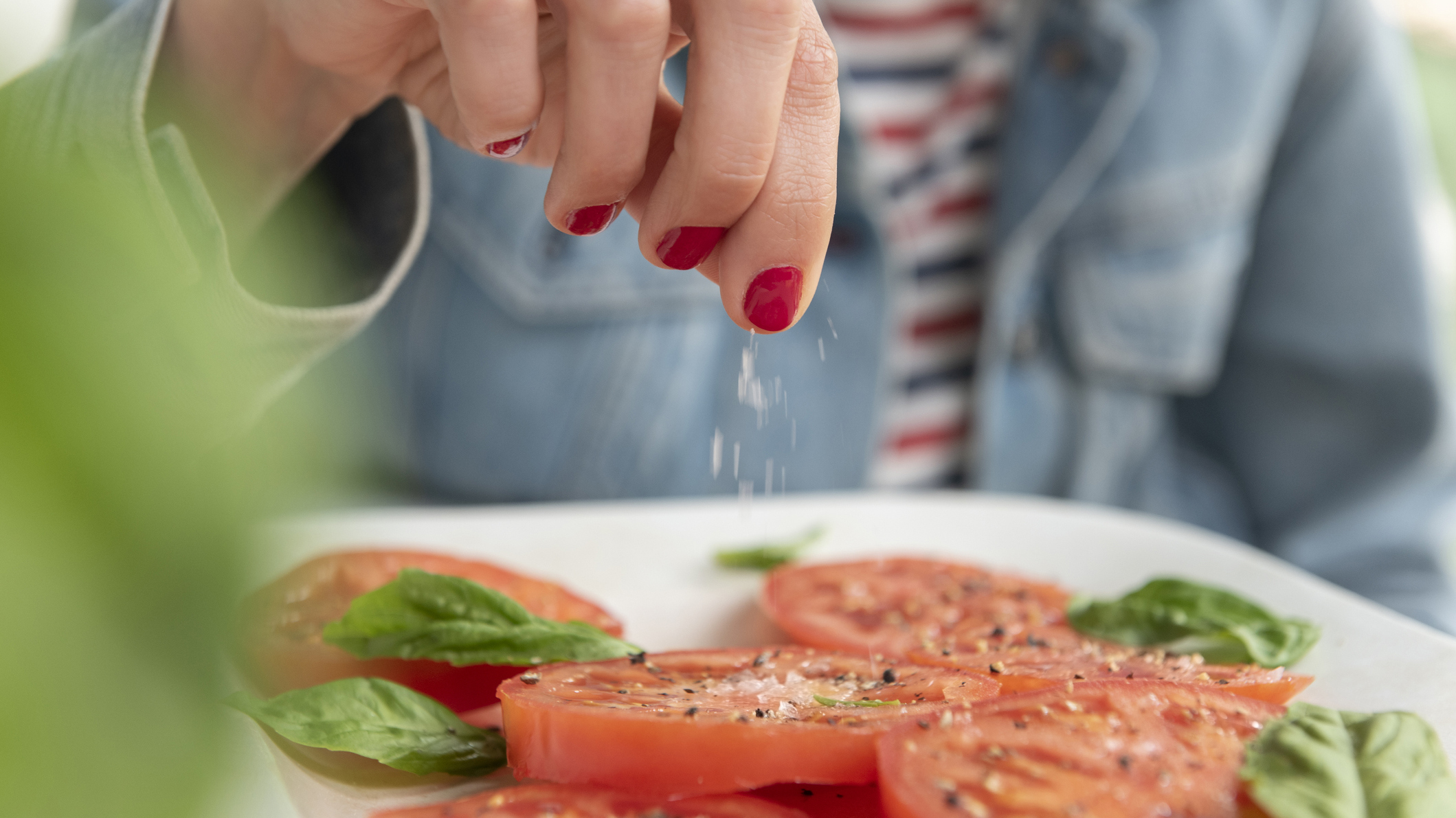
When it comes to eating healthily, we all know that too much salt is bad for you - and that reducing your sodium intake is a good idea. But how to go about it?
One thing’s for sure - it can be a challenge. Not only do salty foods taste so darned good, but there’s also the issue of hidden sodium, which can pop up in the most surprising of places.
But the need to reduce our sodium intake is real - especially considering the average American consumes 3,400 mg a day - almost 50% more than the recommended 2,300 mg.
- How to lower blood sugar levels
- How to lower your cholesterol: 4 tips to help keep your heart healthy
Consuming too much sodium can lead to high blood pressure, which is a leading cause of heart disease - the nation’s leading killer - and stroke.
However, there are things you can do to take control and cut your sodium intake. Try following these expert tips.
1. Don’t be fooled by different types of salt
All salt is the same. Whether it’s pink, black, rock, crystal or flakes, they all contain the same amount of sodium. Less refined salts, such as Himalayan rock salt, contain more nutrients than table salt, but the negative effects of sodium far outweigh any benefits.
2. Experiment with different flavors
Flavor doesn’t only come from salt. Try adding fresh herbs and spices to your recipes instead of instinctively reaching for the salt pot.
Start your week with achievable workout ideas, health tips and wellbeing advice in your inbox.
As Sonia Pombo, nutritionist at Consensus Action on Salt and Health (CASH), says: 'We’re not born with a preference for salty food - it’s something we develop. Like sugar, the more salt we eat, the more our taste buds adapt to the flavour, and the more we need.'
She adds: ‘By reducing your salt intake or, ideally, cutting it out completely, you can retrain your taste buds in a few weeks.’
3. Watch your meds
A study published in the British Medical Journal found a link between certain types of medication and the risk of cardiovascular health problems due to high sodium levels in some effervescent, dispersible and soluble medicines, such as dissolvable paracetamol (acetaminophen). Either use these sparingly or switch to non-dissolvable forms of the medication.
4. Check salt levels on sugary foods
Salt is added to just about anything - even sweet foods and cereals. So always check products such as muffins and cookies, as well as raising agents such as baking powder, which all contain sodium.
5. Don't be a slave to recipes
In recipe books, salt still features in many recipes - especially if you’ve still got your grandmother’s old tome! But don’t fall into the trap of being a slave to the recipe. You don’t need to add salt to water while cooking potatoes, rice or vegetables, for example. So banish salt from your cooking, and only add it if it really needs it on tasting.
6. Avoid temptation
A lot of us tend to add salt to our meals from habit, so simply don’t put a salt cellar on the table. If you must have it, be sparing or try a low-sodium alternative, such as Lo Salt.
7. Look out for sneaky sodium
Hidden salts can be found in the most likely of places. Sneaky salt shockers include:
Bread: Although not particularly salty in itself, white bread makes up 11% of Brits’ daily salt intake, according to the National Diet and Nutrition Survey. Look for loaves with less than 0.4g per slice, and be careful with bakery goods - they don’t provide nutritional info and slices may be thicker if you cut it yourself.
Bacon: Just two rashers may contain anywhere from a third to over 100% of your daily recommended intake of sodium.
Gravy and savoury sauces: Step away from the ketchup! The salt content varies widely from brand to brand, so look for low-sodium options.
Cheese: About 9% of our average daily salt intake comes from cheese. Some, including halloumi, feta, Edam and Roquefort, can be saltier than sea water.
Pasta, rice and pizza: A recent study found that half of all shop-bought pizzas contain 6g of salt – that’s your entire daily allowance in one sitting!
Launched in 2020, Fit&Well.com is all about helping you meet your health and fitness goals in ways that are fun and achievable. With news and features on fitness, weight loss, running, nutrition, yoga, wellness and more, we're committed to helping you wherever you are on your fitness journey. We break down the best fitness tech, with reviews, buying guides and the latest deals on fitness and wellness kit, from dumbbells to diffusers.
We cater for all difficulty levels here. It doesn't matter if you're a beginner in the world of fitness or you're gearing up for your tenth marathon: we're all moving towards the same goal – creating a healthier, happier you. From guides on getting started doing walks around the block, to creating the perfect work-from-home space, to eating to fuel your first triathlon. It's all here.

